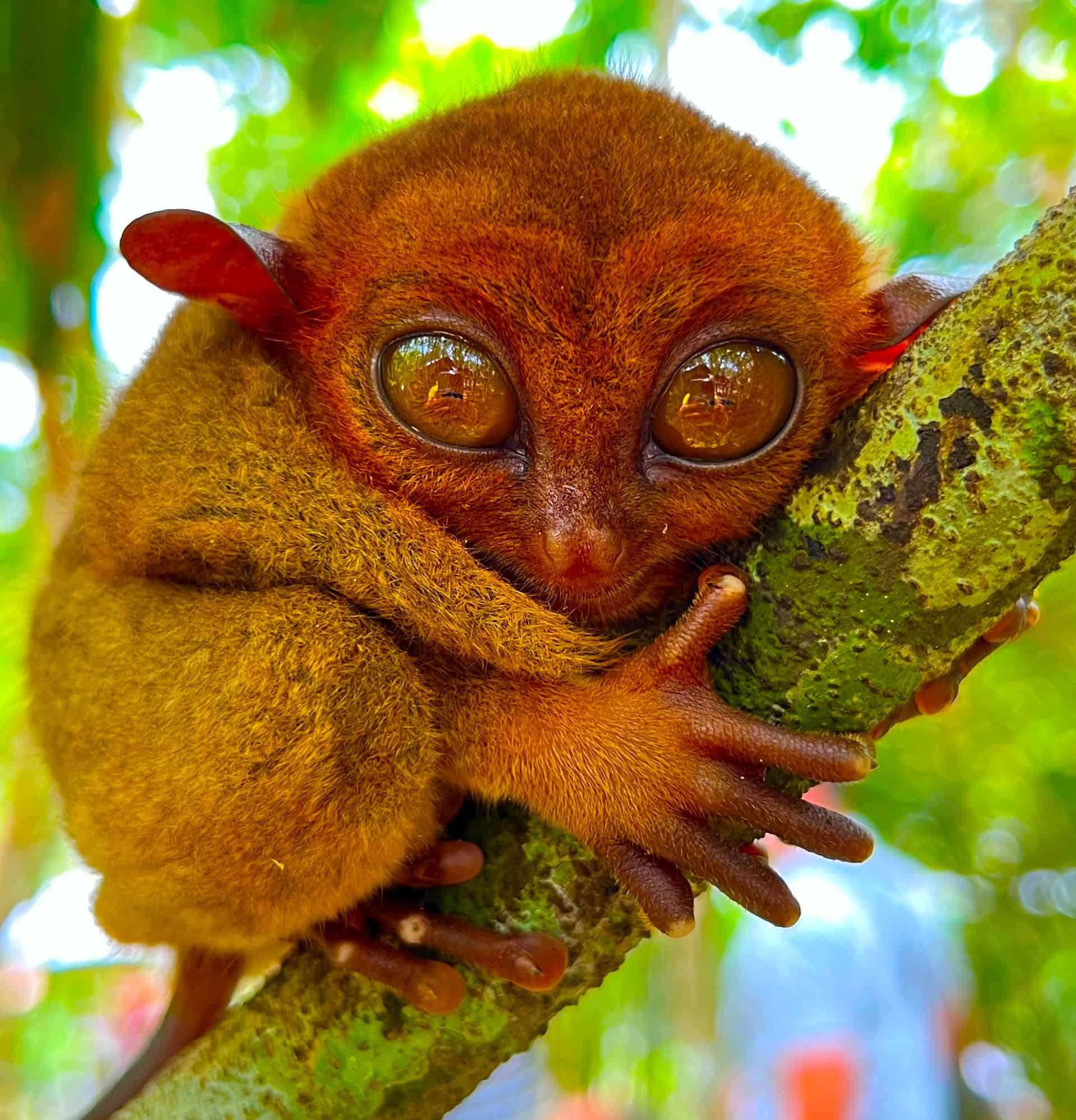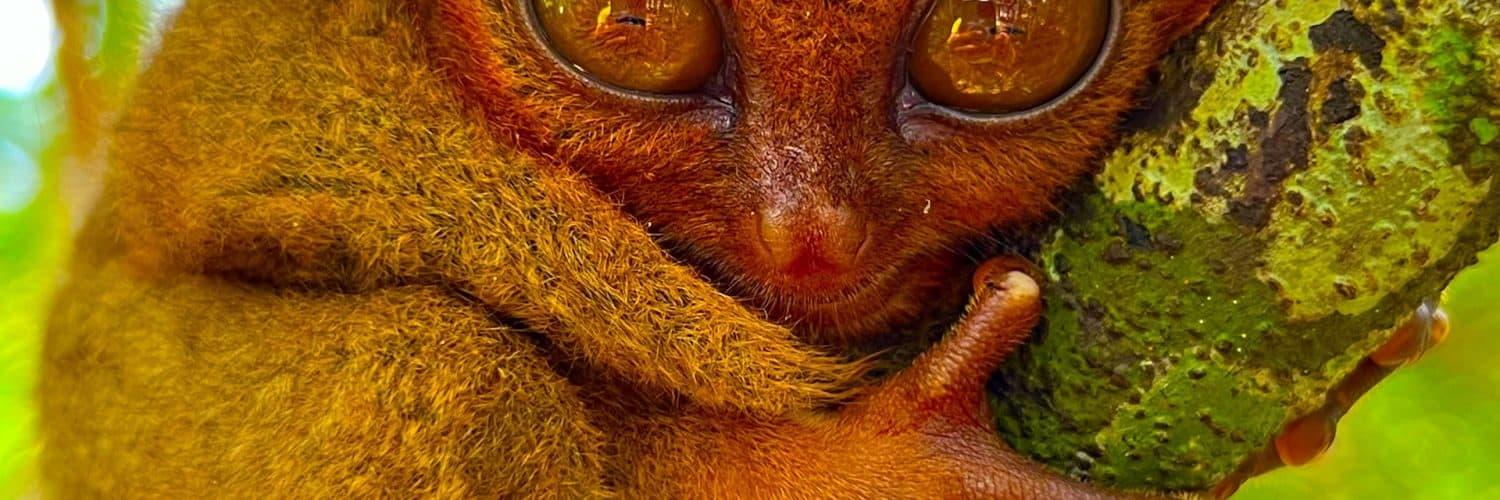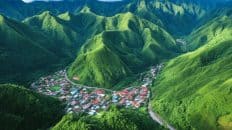The Philippines is home to a plethora of unusual and fantastic animals. The unique geography and climate of the archipelago have led to the evolution of these endemic species, each with its own captivating story. It’s a poignant reminder of the need for conservation and the importance of preserving the natural world for future generations.
The Philippines, known for its picturesque landscapes and bustling cities, is also a haven for biodiversity. The vast majority of the country’s wildlife can’t be found anywhere else in the world. Although popular animals like the Philippine eagle or tarsier often steal the spotlight, there are many other unusual creatures that deserve our attention. Here are 10 of the best and most unusual animals the Philippines has to offer.
10 Best Unusual Animals Found in the Philippines
- Palawan Bearcat (Binturong)
- Philippine Mouse-deer (Pilandok)
- Philippine Flying Lemur (Kagwang)
- Philippine Pangolin (Balintong)
- Tamaraw
- Panay Monitor Lizard
- Negros Bleeding-heart Dove
- Philippine Naked-backed Fruit Bat
- Mindoro Crocodile
- Visayan Warty Pig

1. Palawan Bearcat (Binturong)
The Palawan Bearcat, also known as the Binturong, is neither a bear nor a cat. Instead, it belongs to the family Viverridae and resembles a large civet. Found mainly in Palawan’s dense forests, the binturong has a prehensile tail that it uses to grip tree branches. Its fur is thick and black, with a face that looks like a mix between a bear and a cat. An intriguing fact about this mammal is its scent: its urine smells strikingly like buttered popcorn!
This curious creature is largely nocturnal and has an omnivorous diet consisting of fruits, plants, insects, and smaller animals. They play a crucial role in forest ecology by dispersing seeds throughout the forest. The binturong’s population is, unfortunately, declining due to habitat loss and hunting. Efforts are being made to conserve and protect this unique species, which has become symbolic of Palawan’s rich biodiversity.
2. Philippine Mouse-deer (Pilandok)
Native to the islands of Balabac, Bugsuk, and Ramos, the Philippine Mouse-deer, locally known as Pilandok, is the smallest hoofed mammal in the world. Unlike other deer species, the pilandok does not have antlers. Instead, males use their elongated, tusk-like upper canine teeth for defense and to establish dominance during mating seasons.
Though they are called mouse-deer, they are not closely related to mice or deer. These timid creatures primarily feed on plants and have a preference for mangrove swamps and coastal habitats. With increasing habitat destruction and hunting, conservation measures are vital for the continued existence of this miniature marvel.
3. Philippine Flying Lemur (Kagwang)
Contrary to its name, the Philippine Flying Lemur isn’t a true lemur and doesn’t fly. It’s more accurately described as a “glider.” The kagwang has a patagium, a membrane stretching from its neck to the tips of its fingers and toes, enabling it to glide from tree to tree in search of food.
Native to Mindanao and Bohol, these animals are shy and nocturnal. They primarily feed on soft plant parts such as young leaves, flowers, and fruits. Although not endangered, they face threats from deforestation and hunting, emphasizing the importance of sustainable practices to protect their habitat.
4. Philippine Pangolin (Balintong)
Pangolins, sometimes referred to as “scaly anteaters,” are unique mammals covered in protective keratin scales. The Philippine Pangolin, found in Palawan, is one of eight pangolin species worldwide. These nocturnal creatures feed mainly on ants and termites, using their long, sticky tongues to retrieve their prey.
The Philippine Pangolin, like other pangolin species, is critically endangered. The primary threat they face is poaching, as their scales are in high demand in traditional medicine, and their meat is considered a delicacy. Thankfully, awareness campaigns and conservation efforts are underway to protect these incredible animals from the brink of extinction.
5. Tamaraw
The Tamaraw, or Mindoro dwarf buffalo, is a small, stocky buffalo unique to Mindoro Island. Smaller than the typical water buffalo, it has a distinct V-shaped horn arrangement. The tamaraw primarily grazes on grass but can also consume fruits and young shrubs.
The Tamaraw is critically endangered due to a combination of habitat loss, hunting, and disease. Intense conservation efforts are ongoing, including the establishment of the Mounts Iglit-Baco National Park, to ensure the survival of the few hundred individuals remaining in the wild.
6. Panay Monitor Lizard
The Panay Monitor Lizard, native to the Panay Island in the Philippines, stands out because of its striking coloration: a beautiful blend of yellow and black patterns. Growing up to two meters in length, these lizards are arboreal, spending much of their time in trees. Their diet is diverse, including fruits, insects, and smaller vertebrates.
The primary threats to this monitor lizard are habitat destruction and hunting, as their meat is consumed by locals. Conservation programs have been initiated to study, protect, and increase awareness about this beautifully-patterned creature.
7. Negros Bleeding-heart Dove
The Negros Bleeding-heart Dove gets its evocative name from the vivid red patch on its white breast, resembling a bleeding wound. Found primarily on the islands of Negros and Panay, this bird lives in tropical lowland forests and prefers to stay on the ground.
Sadly, this bird’s unique beauty has also led to its decline. Deforestation, hunting, and trapping for the pet trade have pushed this dove to the brink. Conservation programs are fighting for its protection, aiming to rejuvenate the dwindling populations.
8. Philippine Naked-backed Fruit Bat
This intriguing bat species, found primarily in Negros and Cebu, is characterized by its lack of fur on its back, which gives it its name. These bats play an essential role in forest ecosystems by pollinating flowers and dispersing fruit seeds.
Tragically, the Philippine Naked-backed Fruit Bat was thought to be extinct in the late 20th century due to hunting and habitat loss. However, small populations were rediscovered in the early 2000s. Conservation efforts are now more critical than ever to protect these nocturnal wonders.
9. Mindoro Crocodile
The Mindoro Crocodile is a freshwater species endemic to Mindoro Island. Smaller than the common saltwater crocodile, it prefers freshwater habitats like rivers, ponds, and lakes. Unlike many of its relatives, this crocodile is not considered a threat to humans.
However, human activities pose a significant threat to the Mindoro Crocodile. Due to habitat loss, hunting, and water pollution, their numbers have severely declined. Conservation initiatives, including local community involvement, are vital for this crocodile’s future.
10. Visayan Warty Pig
Endemic to six of the Visayan Islands, the Visayan Warty Pig is named for the three pairs of warts or lumps present on the males’ faces. These pigs were once widespread across their native range but have now been reduced to a few fragmented populations. Their decline is primarily due to habitat destruction, hunting, and interbreeding with domestic pigs.
Efforts are ongoing to understand better and protect this pig species. Captive breeding programs, combined with habitat protection, are crucial steps towards ensuring that the Visayan Warty Pig remains a part of the Philippines’ rich biodiversity.


















Add comment